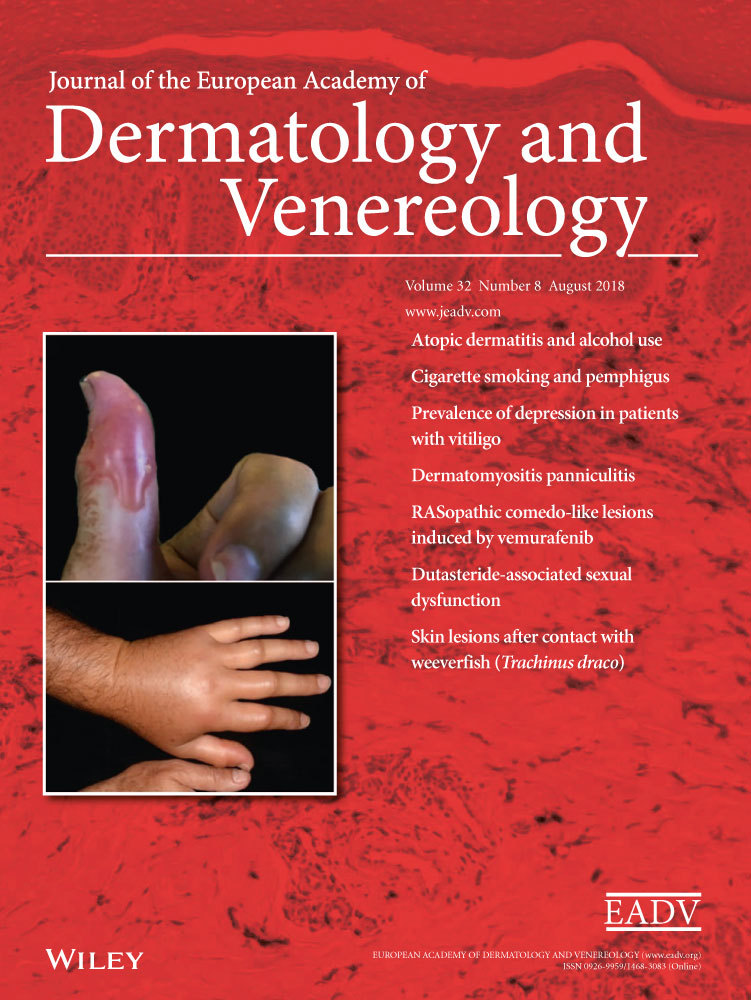Power Doppler ultrasound assessment of vascularization in hidradenitis suppurativa lesions
Conflicts of interest
None declared.
Funding sources
None declared.
Abstract
Background
Ultrasound (US) and Power Doppler (PD) US are useful tools to study and monitor the patients with hidradenitis suppurativa (HS).
Objective
Describe the PD signal of HS nodules, abscesses and fistulas.
Methods
A retrospective analysis of PD in mild, moderate and severe HS patients, collecting all demographic and clinical data. The lesions were classified according to their US morphology, describing the vascular degree – high, moderate and minimal – and distribution – peripheral, internal and mixed. Statistical analysis was performed using odds ratio and bivariate regression.
Results
A total of 241 lesions, 62 nodules, 64 abscesses, 99 simple fistulas and 16 complex fistulas, from 61 patients with HS, were included. Vascular distribution was defined peripheral in 143/241, mixed in 55/241 and internal in 0/241 lesions, regardless the clinical type. Qualitative Doppler showed high vascularization in 44/241 lesions, moderate in 79/241 and minimal in 75/241, despite the clinical type. All lesions showed resistive index <0.7. Age, disease's duration, size of the lesions, high Sartorius score and high BMI showed positive statistical correlation with both PD signal and mixed vascular distribution. No statistical significance was evidenced for vascular degree measurements.
Limitations
US cannot detect lesions <0.1 mm.
Conclusion
Vascular distribution of HS lesions can be evaluated by PD with additional relevant information for earlier and better disease management.




